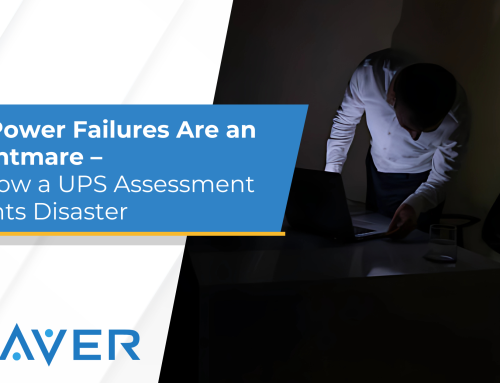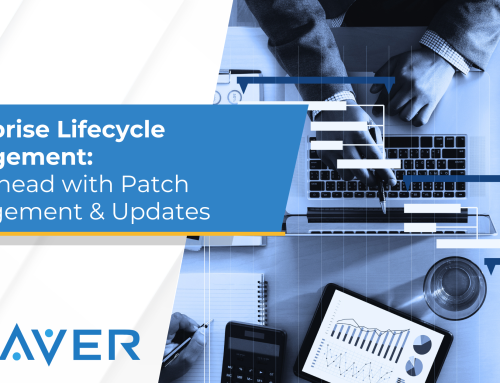In the rapidly evolving digital landscape, securing cyber environments is a formidable challenge for government bodies worldwide. Among various strategies explored, Zero Trust Architecture (ZTA) has gained significant attention. ZTA represents a shift from the traditional “trust but verify” approach to a “never trust, always verify” principle. In this context, let’s explore the role of Zero Trust Architecture in government cybersecurity.
Unpacking the Concept of Zero Trust Architecture
Zero Trust Architecture is a security model that assumes threats exist both outside and inside an organization. It calls for stringent access controls and identity verification, regardless of a user’s location or network access point. With the rise in remote work and the sophistication of cyber threats, ZTA is becoming a compelling choice for government bodies to ensure authenticated users and devices access sensitive data and services.
Benefits of Zero Trust Architecture in Government Cybersecurity
If you’ve been following the news, you know ransomware attacks are everywhere. They’re causing chaos for organizations, and government bodies are no exception. But here’s where the magic of Zero Trust Architecture (ZTA) comes in. Let’s now explore how ZTA can help mitigate these ransomware attacks…
Mitigating Ransomware Attacks
Imagine a world where every single access request is put under the microscope. No trust is given, not even a pinch. That’s ZTA for you. It’s like the bouncer at the club, not letting anyone in unless they’re on the list and meet the dress code.
Ransomware attacks often sneak in and then move around the network to find valuable data to hold hostage. But with ZTA, we’re playing a whole new ball game. It’s like building walls around our data so that even if someone sneaks in, they can’t go anywhere. We call it “micro-segmentation,” and it’s a game-changer in containing the spread of ransomware.
Enhancing Endpoint Security
Now let’s talk about endpoint security. With more devices connected to our networks than people on Earth, this is a big deal. ZTA takes this very seriously.
With ZTA, every device is treated like a new kid on the block. It has to prove that it’s following all the rules — right software versions, security patches, and configuration — before we let it in. And if it steps out of line, access is denied. It’s a strong line of defense against compromised endpoints.
Cybersecurity Training and Consulting
I won’t sugarcoat it; implementing ZTA is no walk in the park. It’s like learning a new language, but instead of words and grammar, we’re dealing with complex cybersecurity concepts.
That’s where cybersecurity training and consulting come in. Think of it as hiring a personal trainer but for your network security. They provide tailored advice, help you avoid common pitfalls, and support you during the transition to ZTA.
Not only that, but they also help foster a security-aware culture within your organization. In a ZTA environment, everyone’s a player in the game of network security.
Making the Leap to Zero Trust Architecture: What You Need to Know
You’ve heard about the wonders of Zero Trust Architecture (ZTA) and you’re ready to jump in. But hold your horses! Transitioning to this new model isn’t like flipping a switch. It takes careful planning and a keen eye for detail. Let’s dive into what you should consider before taking the plunge.
Handling Cybersecurity Risks like a Pro
Moving to ZTA is kind of like remodeling your house — you’re tearing down old walls (or in this case, traditional perimeter-based security models) and building new ones. It’s exciting but it also introduces a whole new set of risks. This is where having a solid cybersecurity risk management strategy comes into play.
You’ll need to identify the risks that come with the territory. These could be anything from hiccups in your operations, to resistance from your team, to unexpected security gaps. Once you’ve got these nailed down, it’s time to assess how big of a threat they pose and how likely they are to happen. The biggies that could cause major problems or are likely to occur should be your priority.
But identifying and assessing risks isn’t enough. You’ve got to have a plan to tackle them. This could involve things like backup systems, disaster recovery plans, training your team, and regular check-ups on how the ZTA transition is going.
Remember, this isn’t a one-and-done thing. Your strategy should be as fluid as the cybersecurity landscape itself.
Keeping an Eye on Your Cybersecurity Health
In a ZTA world, you can’t afford to sit back and relax once everything’s set up. It’s all about staying vigilant and continuously improving your cybersecurity measures. Think of cybersecurity assessments as regular health check-ups for your ZTA environment.
Start with continuous monitoring. You’ll need tools and processes to keep a watchful eye on network traffic, user behaviors, and the health of your devices. This way, you can spot any odd behavior that could signal a security threat.
Next, make sure you’re doing regular audits of your security policies, access controls, and system configurations. You want to make sure everything’s still in line with ZTA principles and keeping the bad guys out.
Last but not least, take a good hard look at how well you’re responding to incidents. With ZTA, it’s all about spotting and containing threats as quickly as possible. Your incident response mechanisms should be as sharp as a tack.
Remember, the effectiveness of ZTA is highly dependent on the continuous evaluation and improvement of security measures.
Compliance with IT Security Regulations
Government bodies are often subject to stringent IT security compliance requirements. When transitioning to ZTA, it’s essential to ensure that all practices align with these regulatory requirements. This involves:
- Regulatory Mapping: Identify all the relevant IT security regulations that the organization is subject to. This could include federal laws, industry-specific regulations, and international standards.
- Compliance Assessment: Evaluate the existing IT practices and the proposed ZTA measures against these regulatory requirements. Identify any areas of non-compliance and develop strategies to address them.
- Documentation and Reporting: Ensure that all actions taken towards compliance are properly documented. Regular reports should be generated to demonstrate the organization’s ongoing compliance efforts.
Transitioning to ZTA is a complex process that requires a comprehensive understanding of the organization’s cybersecurity landscape, a commitment to continuous assessment and improvement, and a meticulous approach to regulatory compliance. With these considerations in mind, organizations can effectively navigate their journey towards a Zero Trust environment.
Seeing the Bigger Picture: The Journey Towards a Secure Digital Future
In today’s increasingly digital world, we’re encountering more complexities and challenges than ever before. Amid this intricate landscape, one truth has emerged crystal clear: the demand for robust, reliable cybersecurity measures has escalated to unprecedented levels. The shift towards Zero Trust Architecture (ZTA) by governmental bodies isn’t just a trend—it’s a significant leap towards fortifying our collective future against cyber threats.
But, what does this mean for you and your organization? Are you prepared to embrace the transformative potential of Zero Trust Architecture, and how it can revolutionize your governmental agency’s cybersecurity landscape?
At Weaver Technologies, we’re not just cybersecurity experts—we’re partners in your journey towards a more secure digital future. We understand the unique challenges that government bodies face, and we specialize in helping organizations like yours navigate the labyrinth of cybersecurity. Our team is well-versed in the intricacies of Zero Trust Architecture, and we’re here to guide you through the transition, ensuring your cybersecurity measures are not just robust, but also adaptable to the evolving digital landscape.
Let’s work together to not only anticipate potential risks but also to proactively create an environment that is secure, resilient, and primed for the future. After all, the path to a secure digital future doesn’t have to be a solo venture—it’s a journey we can embark on together. Ready to explore the possibilities? Contact us today, and let’s start crafting your cybersecurity strategy.







